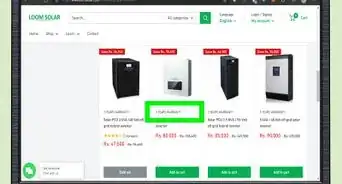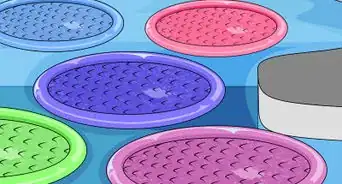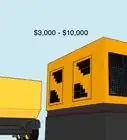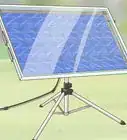This article was co-authored by Frank Boss. Frank Boss is an Electrician and the Owner of AArdvark Electric Service. With over 25 years of experience, he specializes in all forms of lighting installation including recessed lighting, under-cabinet lighting, and security and flood lights. He also has experience in all forms of residential and commercial electrical services including troubleshooting, correcting code violations, service upgrades, and ceiling fan installation.
There are 7 references cited in this article, which can be found at the bottom of the page.
wikiHow marks an article as reader-approved once it receives enough positive feedback. This article has 21 testimonials from our readers, earning it our reader-approved status.
This article has been viewed 341,087 times.
A small solar power generator is a relatively cheap, sustainable way to generate off-the-grid power when you need it. For example, if you have a cabin that you can’t connect to a power grid and you don’t want to rely on a traditional gasoline-powered generator, you might consider installing a small photovoltaic solar power system. Before you get started, make sure you estimate how much energy you need the system to generate, which will guide you in choosing components for the system. After that, it’s pretty much just a matter of plugging everything in to start generating solar power and running your electrical appliances off it!
Steps
Calculating Your System Needs
-
1Divide your monthly energy use by 30 to estimate your daily energy use. Look at your utility bill for the past month to see how much energy in watts you used in total. Divide this number by 30 to get the approximate amount of energy in watts you use in a single day.[1]
- For example, if you used 9,000 watts of energy in a month, dividing it by 30 would show you that you used approximately 300 watts per day.
-
2Multiply your daily energy by 24 to convert it to watt-hours of power. Take the number you got from dividing your monthly energy use by 30 and multiply it by 24 hours. This will give you an estimation of how many watt-hours of energy you need available each day.[2]
- For example, if you use 300 watts of energy a day, 300 multiplied by 24 hours gives you 7,200 watt-hours (Wh). That’s how much electricity you need your small solar power generator to be able to provide on an average day.
- For this example, 7,200 Wh can also be looked at as 7.2 kilowatt-hours (kWh). It’s the same thing.
Advertisement -
3Use enough solar panels to generate the watt-hours of power you need. Solar panels of different sizes generate different amounts of power. A single 330 W solar panel typically generates about 1,500 Wh of power each day, for example. Divide the Wh of power you need each day by how much power the size of solar panels you are going to use generates to determine how many solar panels you need.[3]
- For example, if you’re going to use 330 W panels and you need 7,200 Wh of power a day, divide 7,200 by 1,500 to get 4.8 solar panels. This means that you could generate more than enough power by using 5 330-watt solar panels.
- You can get a 330-W solar panel for about $250-$350 USD. They are available to order online from various solar supply companies. The panels should come with cables and hardware.
-
4Utilize enough 12-V batteries to hold twice the power you need. Using only about half the capacity of your battery system will keep it in good shape and help it last longer. Double the amount of power you calculated you will need each day to decide how much battery capacity you need.[4]
- For example, if you determined you need 7.2 kWh of power a day, you should get a battery system with a capacity of 14.4 kWh.
- A 12-V battery supplies 1,200 Wh of power. If you need 14,400 watt-hours of capacity, use a battery system with 6 12-V batteries.
- It’s recommended to use 12-V batteries for a solar power generator, but you could also use bigger or smaller batteries if you want. For example, you could wire 2 6-V batteries together in sequence to make the equivalent of 1 12-V battery or use a single 24-V battery instead of 2 12-V batteries.
- You can use any deep cycle lead-acid battery for your solar battery. For example, there are batteries specifically made for solar systems. You can’t use a car battery because they are not deep cycle, which means they are not meant to be used until empty and recharged constantly, so they will wear out quickly.
- You can order 12-V solar batteries online for anywhere from $50-$200 USD. You may have to buy battery cables separately, which cost around $10 USD.
-
5Choose a charge controller that matches your battery system size. Controllers receive the solar power from your panels, automatically adjust the amount of power running into the batteries to charge them, and send the power back out from the batteries for your use. Pick a solar charge controller that is rated for the voltage of your battery system.[5]
- For example, if you’re going to use 6 12-V batteries, you would need a charge controller rated for 72 volts. The voltage rating is listed on the packaging or in the product description online of solar charge controllers.
- You can buy a solar charge controller rated for up to 72 V online for about $50 USD. You don’t need any cables or anything for it because the items you plug into it will have their own cables.
-
6Pick an inverter that can support the max amount of power you plan to use at once. Inverters convert the DC power from the batteries to AC power for your use and have outlets to plug appliances into. Select a controller that can handle the maximum Wh of power you would use at any one time during the day.[6]
- You can add up the watt-hour ratings of all the electrical appliances you think you might use at once, such as lights, a fridge, and a microwave, for example, to estimate how big your inverter needs to be.
-
7You can usually find the watt-hour or watt ratings printed or on a sticker on the base or back of an electrical appliance. For example, a 60 W light bulb uses 60 watts of electricity per hour.
- The Wh rating of an inverter will be listed on the packaging or in the product description online.
- Keep in mind that using 7,200 Wh of power per day doesn’t necessarily mean you need an inverter that can convert all that power at once. You just need an inverter that can convert the most power you would use at any one time.
- You can find a 1000- to 2000-W solar inverter online for under $200 USD. It should come with the cables you need to connect it.
- The basic calculation for power is volts(V) x amps(A) = watts(W) = power(VA).
- If you are only going to separate a few circuits dedicated to emergency needs, they will have to be in a dedicated emergency subpanel.
- The size of the subpanel depends on the number of circuits and power requirements.
Hooking Everything Up
-
1Set up your solar panels where they will receive full sunlight.[7] Install your solar panels on your roof or in your yard. Avoid spots that are shaded by things like trees or other buildings.
- Full sunlight for solar panels is considered to be about 5 hours of direct sunlight a day.
- Solar power generator solar panels are smaller and more portable than on-grid solar system panels, so you can move them around later on fairly easily if you need to.
-
2Plug your batteries into the charge controller. Connect the positive and negative cables from the batteries to the positive and negative terminals on the charge controller. This will allow the power from the solar panels to charge the batteries and get stored there.[8]
- The batteries should be located nearby to the charge controller. For example, you could mount the charge controller to a basement wall and have the batteries on the floor right below it.
- Your solar charge controller will have clearly labeled outlets for all the cables and may have them numbered in the order you should connect things.
-
3Put the power cables from the solar panels into the charge controller. Your solar panels will come with positive and negative solar power cables. Plug them into the positive and negative solar cable outlets on the charge controller to send the power from the solar panels through the charger into the batteries where it will be stored.[9]
- Your charge controller can be attached to a wall or other surface anywhere inside your home, such as in the basement, inside a closet, or under a bench.
-
4Connect the inverter to the batteries. Run positive and negative battery cables from the battery system to the positive and negative terminals on the inverter. This will provide the solar power stored in the batteries to the inverter and convert it, so you can plug appliances that you want to use directly into the inverter.[10]
- You can also connect 12-V loads directly to the controller, in addition to using an inverter. For example, you could wire a 12-V light bulb directly to the controller to run your lights and keep your inverter completely free to plug other things into.
- Your controller will have 2 slots for positive and negative DC load wires that you can just plug positive and negative wires connected to something like a light bulb directly into.
Community Q&A
-
QuestionHow do I disconnect solar panels?
 Community AnswerAlways remove the negative pole/connection (black wire) first, then the positive (red wire).
Community AnswerAlways remove the negative pole/connection (black wire) first, then the positive (red wire). -
QuestionHow do I hook up a light to a solar panel?
 Community AnswerYou shouldn't do that. You should hook your solar panel up to a charge controller with a battery. Then hook your light up to the battery.
Community AnswerYou shouldn't do that. You should hook your solar panel up to a charge controller with a battery. Then hook your light up to the battery. -
QuestionCan I have a solar panel with an inverter and no battery to run just during the day?
 Community AnswerYes, you can. Batteries just store energy for later use.
Community AnswerYes, you can. Batteries just store energy for later use.
Warnings
- If you’re not familiar with performing electrical work yourself, hire a licensed electrician to hook up all the components of your solar power system for you to avoid accidents.⧼thumbs_response⧽
Things You’ll Need
- Solar panels
- Battery system
- Charge controller
- Inverter
References
- ↑ https://www.nytimes.com/wirecutter/blog/set-up-off-grid-solar-power/
- ↑ https://www.nytimes.com/wirecutter/blog/set-up-off-grid-solar-power/
- ↑ https://news.energysage.com/how-many-solar-panels-do-i-need/
- ↑ https://www.nytimes.com/wirecutter/blog/set-up-off-grid-solar-power/
- ↑ https://learn.eartheasy.com/articles/our-simple-diy-home-solar-power-system/
- ↑ https://learn.eartheasy.com/articles/our-simple-diy-home-solar-power-system/
- ↑ https://news.energysage.com/solar-generators-overview/
- ↑ https://www.youtube.com/watch?v=enaWpIC2j7E&feature=youtu.be&t=268
- ↑ https://www.youtube.com/watch?v=enaWpIC2j7E&feature=youtu.be&t=284
-Power-Generator-Step-1-Version-2.webp)
-Power-Generator-Step-2-Version-2.webp)
-Power-Generator-Step-3-Version-2.webp)
-Power-Generator-Step-4-Version-2.webp)
-Power-Generator-Step-5-Version-2.webp)
-Power-Generator-Step-6-Version-2.webp)
-Power-Generator-Step-7-Version-2.webp)
-Power-Generator-Step-8-Version-2.webp)
-Power-Generator-Step-9.webp)
-Power-Generator-Step-10-Version-2.webp)
-Power-Generator-Step-11-Version-2.webp)


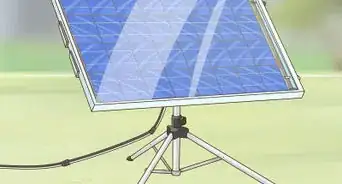
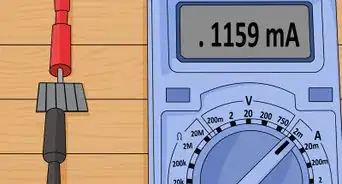
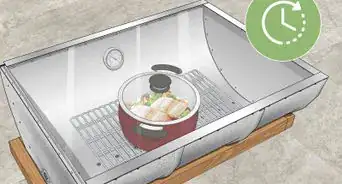
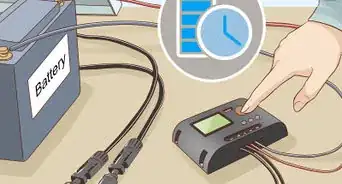
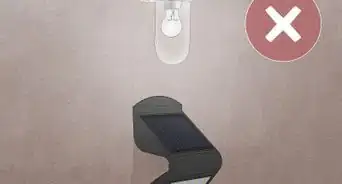
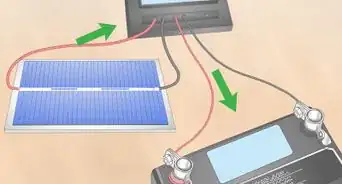
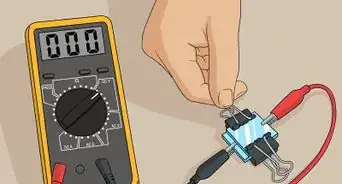


-Step-12-Version-2.webp)
